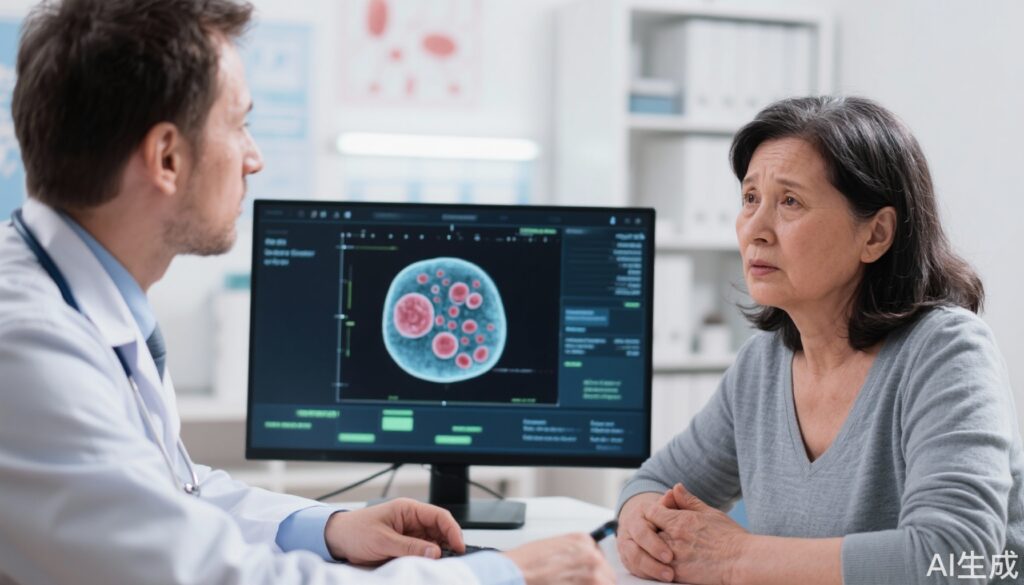Introduction
In recent years, more people have encountered the term “polyp” during routine health screenings, leading to understandable concern and questions: What exactly are polyps? Do they always need to be removed? Are they cancerous or at risk of becoming cancer? These common mucosal growths can appear in various parts of the body such as the stomach, colon, gallbladder, uterus, or nasal passages. Given their prevalence, understanding the nature of polyps, their potential risks, and management strategies is crucial for both patients and healthcare providers.
What Are Polyps?
Polyps are abnormal growths of tissue projecting from a mucous membrane surface. They resemble small lumps or “meaty bumps” and can vary widely in size and number. They may develop anywhere there is a mucosal lining — including the vocal cords, stomach lining, uterus, colon, and even nasal sinuses.
The causes are multifactorial, ranging from chronic inflammation, bacterial or viral infections, genetic predispositions, to spontaneous development without clear triggers. While their appearance often raises alarm, it is important to know that most polyps are benign and do not progress to cancer.
Polyps and Cancer: What’s the Risk?
The crucial question is whether a polyp will develop into cancer. The answer depends on multiple factors which include:
– Type of polyp (histological classification)
– Size and number
– Shape and distribution
– Presence of genetic mutations
Among polyps, adenomatous polyps (adenomas) are considered precancerous and are often implicated in the progression to colorectal cancer. Conversely, inflammatory or hyperplastic polyps typically have minimal malignant potential.
Five Common Types of Polyps: Features, Risks, and Management
This section summarizes key facts to help identify which polyps require caution.
| Type of Polyp | Location | Cancer Risk | Common Symptoms | Typical Treatment | High-Risk Indicators |
|---|---|---|---|---|---|
| Endometrial polyps | Uterine lining | Mostly benign; ~3.4% develop malignancy | Often asymptomatic; possible abnormal bleeding or discharge | Small or asymptomatic: observation; symptomatic or large (>1.5 cm): removal | Postmenopausal, bleeding, multiple or large polyps |
| Gallbladder polyps | Gallbladder interior | ~95% benign; adenomas with ~1.5% cancer potential | Usually asymptomatic; sometimes nausea, right upper abdominal pain | 10 mm or symptomatic: surgery | Size >18 mm, age >60, daughterless polyps, primary sclerosing cholangitis |
| Nasal polyps | Nasal cavity and sinuses | Extremely rare malignancy | Nasal congestion, mucus overproduction, loss of smell, snoring | Medication for small polyps; surgery for large or recurrent polyps | Failed medical treatment or recurrence |
| Gastric polyps | Stomach lining | Mostly benign; adenomatous ones have some risk | Often no symptoms; possible abdominal pain or anemia if bleeding | Benign: observation; suspicious or adenomatous: removal | Large size, adenomatous histology |
| Colonic polyps | Colon lining | Adenomas have cancer risk; non-adenomatous lower risk | Usually asymptomatic; possible abdominal pain, blood in stool | Endoscopic removal recommended; ongoing surveillance crucial | Size≥10 mm, multiple (≥3), high-grade dysplasia |
Common Misconceptions About Polyps
- All polyps are cancerous. In reality, most polyps are benign and will not develop into cancer.
- Polyps always need surgical removal. This depends on the type, size, symptoms, and cancer risk. Many small or asymptomatic polyps can be monitored safely.
- Polyps cause obvious symptoms early on. Many polyps remain asymptomatic and are discovered only during screening or unrelated investigations.
Practical Recommendations for Patients and Clinicians
Early detection and appropriate management of polyps are critical to preventing progression to cancer. The following measures are recommended:
- Routine Screening: Screening colonoscopies and other imaging modalities help identify polyps early, especially for individuals with risk factors such as family history or chronic inflammatory conditions.
- Pathological Evaluation: Histological classification provides critical information about cancer potential.
- Risk-Based Decision Making: Consider polyp size, number, and histology when deciding on removal versus observation.
- Regular Follow-up: Surveillance intervals should be customized depending on polyp features and patient risk profile.
- Lifestyle Modifications: Diet rich in fiber, low in fat, and maintaining a healthy weight may reduce polyp formation risks.
A Patient’s Story: Sarah’s Journey with Colon Polyps
Sarah, a 52-year-old woman, underwent a routine colonoscopy that revealed multiple small polyps. Although initially anxious, her gastroenterologist explained that most polyps are benign but some can increase cancer risk. Three larger polyps (12 mm each) were removed during the procedure, and pathology confirmed adenomas with low-grade dysplasia. She was advised to return for surveillance colonoscopy in three years and adopt a healthier diet and exercise regimen. Sarah’s case highlights the importance of screening and appropriate polypectomy in preventing colorectal cancer.
Expert Insights
Dr. Michael Thompson, a gastroenterologist, emphasizes, “Not all polyps are a cause for alarm, but ignoring potentially precancerous polyps is a missed opportunity for cancer prevention. Timely removal and follow-up are key to reducing colorectal and gastric cancer risk.”
Conclusion
Polyps are common mucosal growths with varied cancer risks depending on type, size, and location. While most are benign, certain polyps, especially adenomas, require careful management to prevent malignant transformation. Understanding the differences across polyps, practicing risk-based surveillance, and following medical advice can significantly reduce cancer risks. Patients should maintain regular health checkups and communicate openly with their healthcare providers to ensure personalized care.
References
- Arieni M, Cerutti R. Pathology and biology of colorectal polyps. Front Biosci. 2021;26:517-528.
- Razavi M, et al. Prevalence and malignancy risk of endometrial polyps: a systematic review. J Obstet Gynaecol Res. 2020;46(1):67-76.
- Farquhar CM, et al. Age-specific prevalence of endometrial polyps and clinical implications. Gynecol Oncol. 2019;155(3):450-457.
- Lee JY, et al. Endometrial polyps in postmenopausal women: screening and management. Menopause. 2021;28(2):147-151.
- De Luca L, et al. Clinical management of gallbladder polyps: a review. World J Gastroenterol. 2019;25(20):2683-2690.
- Kartikasari KB, et al. Gallbladder polyps: diagnosis, treatment, and surveillance. Eur J Gastroenterol Hepatol. 2018;30(7):727-735.
- Liu Y, et al. Gastric polyps: clinical features and cancer risk. Dig Dis Sci. 2019;64(4):938-945.
- Abramson M, et al. Familial and inflammatory factors in colorectal polyps. Clin Gastroenterol Hepatol. 2020;18(2):318-328.


